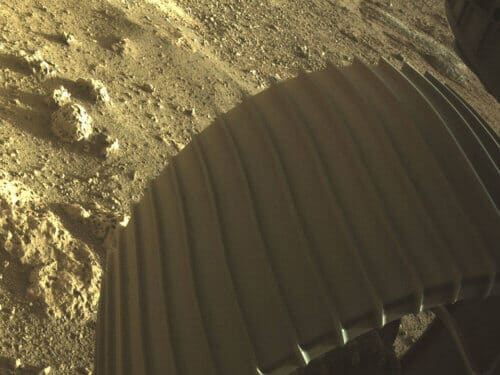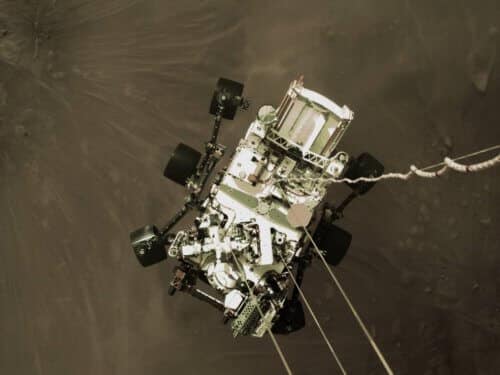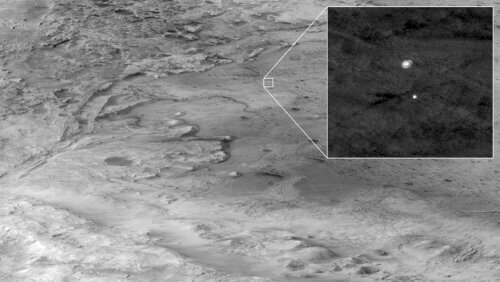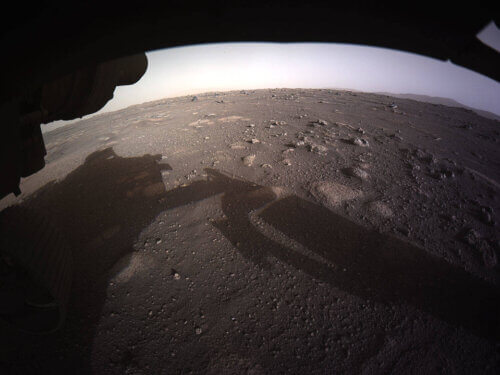After Thursday's successful landing, engineers began testing the condition of NASA's Mars Persistence Vehicle. Among other things, they published preliminary images from the vehicle's cameras, as well as from the camera of the crane that lowered it to the ground and even from space

Less than a day after Preserver's successful landing on the surface of Mars, engineers and scientists at the agency's Jet Propulsion Laboratory in Southern California began the hard work of assessing the spacecraft's condition.
As the data trickled in, relayed by several spacecraft orbiting Mars, the persistence team was relieved to receive the rover's health reports, which showed it was performing as expected.
The excitement grew when a high-resolution image that was taken during the rover's landing arrived. While previous landers such as Curiosity transmitted video intermittently as they approached landing, Preserver's cameras were designed to capture video of the touchdown and this new still image was taken from that video, which is still being beamed back to Earth and processed.
Unlike past rovers, most of the Persistence's cameras will transmit color images. (The reduced images were sent immediately after the landing in black and white to get them quickly to Earth, but they were actually taken in color). After landing, two of the hazard cameras (Hazcams) photographed views from the front and back of the rover, showing one of its wheels in the Martian dirt. Persistence also got a close-up from NASA's eye in the sky: NASA's Mars Rover (MRO) used a special high-resolution camera to capture the rover descending into Jizero Crater, its parachutes trailing behind. The High Resolution Imaging Spectroradiometer Experiment (HiRISE) did the same for Curiosity in 2012.

On Friday, the engineers in the control room activated small charges whose explosion was intended to release the mast of the persistence ("head of the rover") from its place inside the vehicle. The navigation cameras (Navcams), which are used for driving, share space on the mast with two scientific cameras: the Mastcam-Z and a laser device called supercam . The mast is supposed to be raised today, Saturday, February 20, after which the navigation cameras are expected to take panoramic pictures of the rover's deck and its surroundings.
In the following days, the engineers will go over the rover's system data, update its software and begin testing its various devices. In the following weeks, Temada will test the robotic arm and begin an initial, short drive. It will be at least a month or two before Persistence finds a flat spot to land Ingenuity, the helicopter glider attached to the rover's belly, and a long time before it finally takes off into the thin air, begins its scientific mission and searches for its first rock and sediment sample.


The main goal of a Mars persistence mission is Astrobiology , including searching for signs of ancient microbial life. The rover will characterize the geology of Mars and its past climate, pave the way for human exploration of the Red Planet, and will be the first mission to collect and cache samples of Martian rock and dust made of rock fragments (regular), when spacecraft in a joint mission of NASA and the European Space Agency will land the samples and return them to Earth.
More of the topic in Hayadan:
